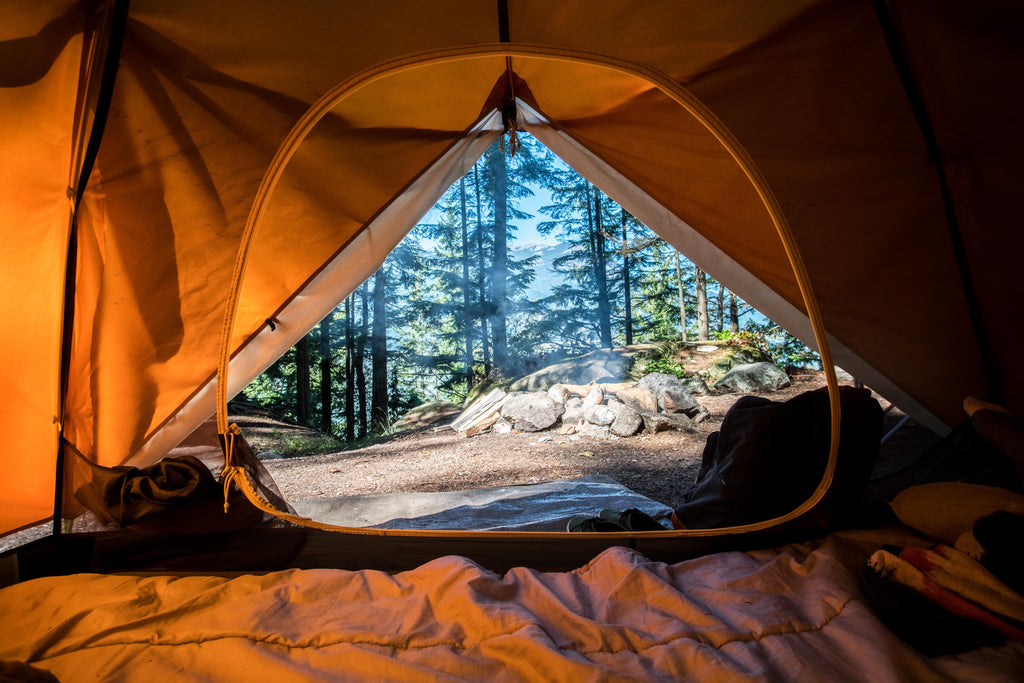How to Pitch a Tent: A Step-by-Step Tutorial

There's nothing better than unplugging, getting back to basics, and leaving the hustle, bustle, and chaos of everyday life behind. Camping is a fantastic way to regroup, unwind, and enjoy all of the beauty – and benefits – that Mother Nature has to offer. There's no denying the amazingness that comes with sleeping under the stars, but you do need to have some protection.
A tent is a staple for camping. It doesn't have to be elaborate, a simple pop-up with a roof, walls, and floor to protect you from the elements and creepy crawlies when you're sleeping. Of course, if you prefer, you could always opt for a more elaborate structure, complete with multiple rooms and even a screened-in porch (there are some fancy tents on the market these days). No matter which size and shape of a tent you choose – or what type of bells and whistles it features – there's one thing that you're going to need to know how to do: pitch it.
If you’ve never pitched a tent before, you’re probably wondering how to go about successfully erecting your temporary shelter. Below, you’ll find easy-to-follow, step-by-step instructions to guide you through the process.
Choose a Location
First things first: choose a location for your tent. Use the following tips to find a suitable space to set up shop:
- Look for a spot that offers natural windbreaks, like trees, a hill, or a large, stable boulder, for example.
- Opt for higher ground to avoid getting flooded out.
- Make sure the space is level.
- If you're camping near a lake, stream, or river, choose a spot that's at least 200 feet away from the water.
- A clearing is your best bet; you don’t want to pitch a tent on a patch of tall grass, lots of rocks and shells, or any other types of debris.
Prep the Site
Once you've found a good site for your tent, you're going to want to prep it. You'll want to find a space that's as debris-free as possible, but it's virtually impossible to find a completely clear spot. Move out any twigs, sticks, rocks, etc. that may be in your chosen area.
Next, you will lay down a ground cloth, such as a waterproof tarp. This will protect the bottom of your tent from any moisture intrusion. Lay the tent on top of the ground cloth. Ensure that the doors are positioned away from the wind to ensure proper ventilation.
Some companies call this cloth a footprint, and you can buy tents that include them, or you may need to purchase it separately. You could also you an old tarp you already have at home.
Set Up the Tent
Layout the poles and put them together. See the included instructions with your tent to find out how to attach the poles to the tent's body. Often you need to clip loops on the tent body onto the poles. When the tent is attached to the bars and is standing, stake the tent to the ground. Begin at the corners, make sure the lines are taut, and use stakes to secure the lines to the ground. Attach the rain fly over the top of the tent and just like the tent itself, stake it out to prevent the fly from blowing away.
If the weather is clear and you don't have privacy concerns, you may prefer to sleep without a rainfly to let you see the stars and trees while in your tent.
Once your tent is set up and secure, you can start setting up sleep space. This is an excellent time to research sleeping pads and sleeping bags.
- Memphis, TN.
Comments 0